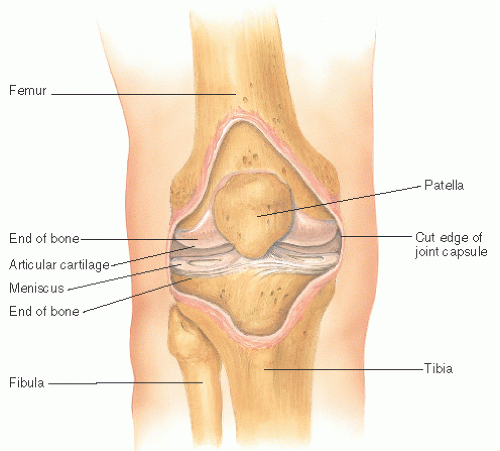Chondromalacia Patella: Anterior Knee Pain in the Young Patient
Jess H. Lonner
Eric B. Smith
CLINICAL PRESENTATION
The term chondromalacia patella is often incorrectly assumed to be synonymous with anterior knee pain, yet it specifically refers to anterior knee pain due to softening and degeneration of the articular cartilage of the patella. Chondromalacia patella causes anterior knee pain with maneuvers such as deep knee flexion, stair and hill ascent and descent, and prolonged sitting. It is more common in young women. Anatomic factors that may predispose a patient to chondromalacia include patella alta (high-riding patella), patellofemoral dysplasia, and a high Q angle that may lead to maltracking.
CLINICAL POINTS
This condition is a common problem in young women.
Anterior knee pain is characteristic.
Deep knee bending aggravates the pain.
PHYSICAL FINDINGS
Patients with true chondromalacia patella will often demonstrate a small knee effusion, tenderness on the undersurface of the patella, and patellar crepitation. Increased Q angle and valgus posture of the leg may be noted. Evidence of hypermobility of the patella with medial or lateral subluxation may be seen. Pain will be elicited with patellar inhibition testing. (With knee extended, press the superior aspect of the patella into the trochlear groove of the femur as the patient tightens the quadriceps. Painful crepitus is considered a positive test.) Prior evidence of trauma to the anterior knee may be present. The patient should be able to actively extend the knee (otherwise be suspicious of patella/quadriceps tendon rupture).
STUDIES (LABS, X-RAYS)
Initial studies that are useful in discerning the cause of anterior knee pain include plain x-rays of the knee. The most helpful views are standing anteroposterior, lateral,
and Merchant or sunrise views. The latter x-ray is performed with the knee in 45 degrees of flexion with the x-ray beam directed 30 degrees caudad from the horizontal. The Merchant/sunrise views can visualize the patellofemoral articulation and the degree of joint space narrowing. If significant joint space narrowing and/or osteophyte formation is present, the patient may have osteoarthritis of the patellofemoral joint.
and Merchant or sunrise views. The latter x-ray is performed with the knee in 45 degrees of flexion with the x-ray beam directed 30 degrees caudad from the horizontal. The Merchant/sunrise views can visualize the patellofemoral articulation and the degree of joint space narrowing. If significant joint space narrowing and/or osteophyte formation is present, the patient may have osteoarthritis of the patellofemoral joint.
Stay updated, free articles. Join our Telegram channel

Full access? Get Clinical Tree








